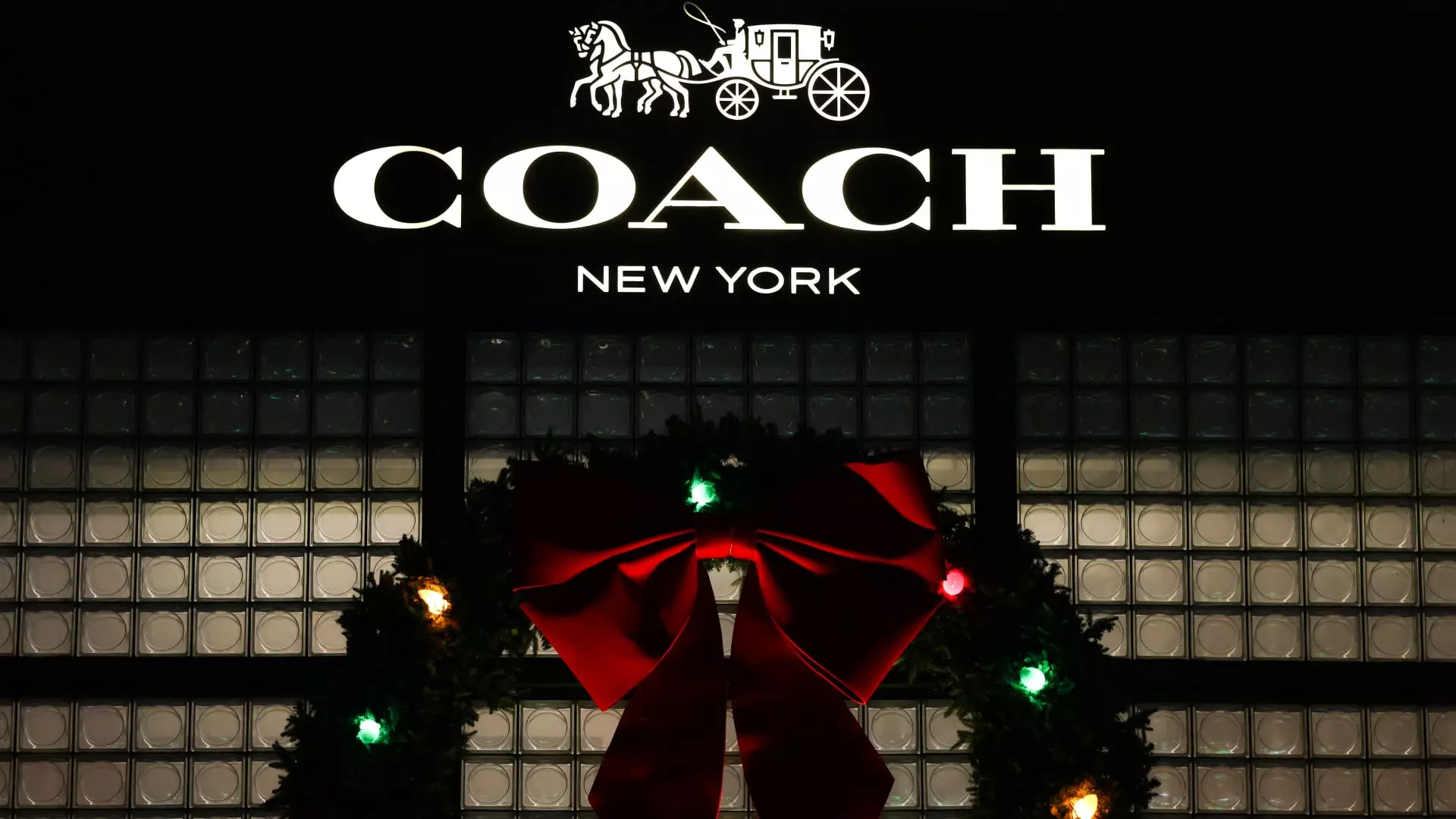The recent surge in the stock price of Tapestry Inc., the parent company of prominent brands like Coach and Kate Spade, reflects a noteworthy performance in the luxury fashion sector. Following the announcement of holiday quarter results that exceeded market expectations, shares of Tapestry experienced a remarkable increase, signaling renewed investor confidence. This article explores the factors contributing to Tapestry’s resurgence, the strategic decisions being implemented, and contrasts its performance with competitors in the luxury retail space.
Tapestry’s impressive holiday quarter results indicate a revitalized consumer interest and effective brand strategies. The company reported adjusted earnings per share at $2.00, surpassing analyst expectations of $1.75, alongside revenue of $2.20 billion, which also exceeded the forecast of $2.11 billion. A standout performer was Coach, which saw revenue growth of 11% year-over-year, showcasing the brand’s ability to connect with consumers through innovation and value-driven offers. This performance contrasts sharply with Tapestry’s competitor, Capri Holdings, which has seen substantial declines in sales across its key brands, highlighting the stark differences in brand management and consumer engagement within the luxury segment.
Despite robust holiday numbers, Tapestry faces headwinds in the form of changing consumer behavior and competitive pressures. CEO Joanne Crevoiserat acknowledges that while consumer spending remains selective, the company’s commitment to delivering innovation and relevance has helped maintain customer loyalty. Tapestry’s strategy focuses on understanding and addressing the nuanced preferences of modern consumers, particularly younger generations who are increasingly defining market trends. The company reported attracting approximately 2.7 million new customers in North America alone, with a significant portion hailing from Gen Z and millennials. This demographic shift represents a vital opportunity for Tapestry to solidify its brand presence in an evolving landscape.
In the wake of an aborted merger with Capri, Tapestry is keen on consolidating its resources to ensure sustained growth for its brands. The halted merger would have combined some of the largest luxury houses, but as the market has revealed, Tapestry’s current focus lies in stabilizing and growing existing brands rather than pursuing ambitious acquisitions. The company’s CFO, Scott Roe, emphasized that Tapestry is in a position to conduct a thorough assessment of brand performance before considering further M&A activity, illustrating a prudent and measured approach in times of uncertainty.
One of the most significant shifts in Tapestry’s strategy is revitalizing the Kate Spade brand, which has underperformed in recent quarters. New leadership under Eva Erdmann aims to streamline product offerings, reducing the number of handbag styles by over 15%. This deliberate move signals a departure from discount-driven sales towards a more refined and less cluttered product mix, which could strengthen brand identity and profitability in the long term. Tapestry is committed to cultivating blockbuster handbag families rather than proliferating SKUs, a strategy grounded in creating enduring customer relationships rather than short-term gains.
Market Opportunities Beyond North America
Tapestry’s growth is not limited to its stronghold in North America, where nearly 70% of sales are generated. The company has reported strong gains in foreign markets, particularly Europe, where revenues soared by 45% during the holiday quarter. This growth suggests ample room for expansion, and Crevoiserat emphasizes that Tapestry’s runway for growth in Europe remains significant due to the relatively low sales and customer base compared to its North American operations. Additionally, with strategic plans to penetrate underdeveloped markets such as China, Tapestry is poised to capitalize on its growing international presence.
As Tapestry refines its approach to brand growth, innovative product development has emerged as a primary lever for attracting new customers. Notable items like the multifaceted Tabby and the New York collection exemplify how the company is tapping into contemporary fashion sensibilities. Diversification within these collections not only appeals to loyal customers but also resonates with newer, younger shoppers, driving engagement and sales. Tapestry’s refusal to rely solely on discounting strategies in favor of compelling new offerings reflects a strategic pivot towards building a robust brand legacy.
Tapestry’s recent performance not only highlights its ability to navigate challenges within the luxury fashion sector but also sets a commendable example of strategic resilience and consumer-centric innovation. With a keen focus on sustainable growth, the company is making deliberate choices to redefine its brand portfolio while preparing to seize future opportunities in international markets. As Tapestry builds toward a promising future, its ability to adapt and innovate will ultimately shape its place among luxury competitors.

